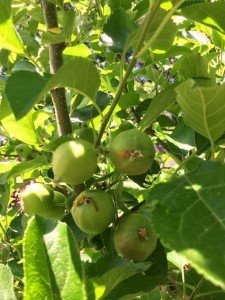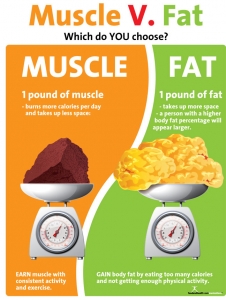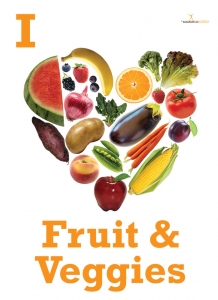What Do You Know About GMOs?
 What do you know about GMOs? What do your clients know?I recently delved into research about genetically-modified organisms (GMOs) and I was honestly surprised by what I found. Obviously GMOs are a controversial topic, but I was really impressed by just how much research was out there along with the prevalence in the food supply.Let's start with a bit of history. The first GMO was a tomato. It was introduced in 1982. By 1985, there were 4 releases of genetically-engineered (GE) organisms for testing. Commercial use of the major GE crops began in 1996 (source).Many crops today are grown using genetically-modified (GM) seeds. Their rapid rise is explored in the report, "Genetically Engineered Crops in the United States," which was published by the United States Department of Agriculture (USDA) in February of 2014. The use of GE crops is now widespread in the United States, and most consumers eat products derived from GE crops. These include cornmeal, oils, and sugars. In fact, corn, soybeans, and cotton are GE crops that take up half of all of the farming land in the US!So exactly how are GMOs growing today? Well, the USDA’s Animal and Plant Health Inspection Service (APHIS) approved over 12,000 releases for GE crops in 2013!The reasons for farmers to choose GE seeds include herbicide tolerance, insect resistance, product flavor or nutrition quality, drought resistance, and virus/fungal resistance. Herbicide-tolerant (HT) crops have traits that allow them to tolerate more effective herbicides such as glyphosate or Round Up. Farmers can spray a whole field with glyphosate and the crops stay alive while the weeds die (6). In fact they are doing this a lot! 93% of all soybeans planted in the US are HT (6) while HT corn makes up 85% of all corn. HT cotton makes up 82% of all US cotton (source).Insect-tolerant crops (Bt) help control tobacco budworms, cotton bollworms, and pink bollworms on 75% of US acreage. The adoption of the Bt crops is the most successful use of GE technology because it allows farmers to use either no pesticides or fewer pesticides on crops. Only 9% of farmers actually used insecticides on their corn in 2010 and the crop returns were still higher than before (source).Herbicide or HT crop use has had mixed results. While the use of glyphosate replaces more toxic herbicides, the weeds are becoming resistant to it. In the Scientific American article, “A Hard Look at 3 Myths About Genetically Modified Crops,” Natasha Gilbert explains that controlling weeds through plowing and tilling deplete topsoil, and that glyphosate is less toxic than the chemicals that were previously used. Rotating crops and tilling along with using other chemicals do not lessen the problem of weeds for farmers. That problem of weeds and weeds becoming resistant to pesticides over time exists no matter what the farmers use, according to Gilbert’s report.Check out the figure below from the USDA ERS, which traces the adoption of GE technology in the US.
What do you know about GMOs? What do your clients know?I recently delved into research about genetically-modified organisms (GMOs) and I was honestly surprised by what I found. Obviously GMOs are a controversial topic, but I was really impressed by just how much research was out there along with the prevalence in the food supply.Let's start with a bit of history. The first GMO was a tomato. It was introduced in 1982. By 1985, there were 4 releases of genetically-engineered (GE) organisms for testing. Commercial use of the major GE crops began in 1996 (source).Many crops today are grown using genetically-modified (GM) seeds. Their rapid rise is explored in the report, "Genetically Engineered Crops in the United States," which was published by the United States Department of Agriculture (USDA) in February of 2014. The use of GE crops is now widespread in the United States, and most consumers eat products derived from GE crops. These include cornmeal, oils, and sugars. In fact, corn, soybeans, and cotton are GE crops that take up half of all of the farming land in the US!So exactly how are GMOs growing today? Well, the USDA’s Animal and Plant Health Inspection Service (APHIS) approved over 12,000 releases for GE crops in 2013!The reasons for farmers to choose GE seeds include herbicide tolerance, insect resistance, product flavor or nutrition quality, drought resistance, and virus/fungal resistance. Herbicide-tolerant (HT) crops have traits that allow them to tolerate more effective herbicides such as glyphosate or Round Up. Farmers can spray a whole field with glyphosate and the crops stay alive while the weeds die (6). In fact they are doing this a lot! 93% of all soybeans planted in the US are HT (6) while HT corn makes up 85% of all corn. HT cotton makes up 82% of all US cotton (source).Insect-tolerant crops (Bt) help control tobacco budworms, cotton bollworms, and pink bollworms on 75% of US acreage. The adoption of the Bt crops is the most successful use of GE technology because it allows farmers to use either no pesticides or fewer pesticides on crops. Only 9% of farmers actually used insecticides on their corn in 2010 and the crop returns were still higher than before (source).Herbicide or HT crop use has had mixed results. While the use of glyphosate replaces more toxic herbicides, the weeds are becoming resistant to it. In the Scientific American article, “A Hard Look at 3 Myths About Genetically Modified Crops,” Natasha Gilbert explains that controlling weeds through plowing and tilling deplete topsoil, and that glyphosate is less toxic than the chemicals that were previously used. Rotating crops and tilling along with using other chemicals do not lessen the problem of weeds for farmers. That problem of weeds and weeds becoming resistant to pesticides over time exists no matter what the farmers use, according to Gilbert’s report.Check out the figure below from the USDA ERS, which traces the adoption of GE technology in the US.Okay, so what does all this mean for the consumer?
 First of all, it's up to you to determine whether you would like to consume GMO products. That said, you probably have already been consuming them. With over 85% of all corn being grown in the US as GE in some way, it's kind of hard to avoid. The products derived from this one crop can be in everything from soda to baked goods. And corn isn't the only GM crop out there, as we just explored above.Second, if you would like to avoid GMO products, it is possible. You just need to choose organic foods. Organic foods cannot be GMOs, so you can put them in your cart and know that they weren't GE. If you go to a farmers' market, you can also ask the people who are selling their produce about whether they use GMOs and under what circumstances.If you would like to learn more about scientific research to date on GMOs, the GENERA database is online for all. GENERA stands for GENetic Engineering Risk Atlas, and it compiles peer-reviewed research on GE crops. It's easy to search and the references are top-notch.If you would like more information on organic farming visit these links:
First of all, it's up to you to determine whether you would like to consume GMO products. That said, you probably have already been consuming them. With over 85% of all corn being grown in the US as GE in some way, it's kind of hard to avoid. The products derived from this one crop can be in everything from soda to baked goods. And corn isn't the only GM crop out there, as we just explored above.Second, if you would like to avoid GMO products, it is possible. You just need to choose organic foods. Organic foods cannot be GMOs, so you can put them in your cart and know that they weren't GE. If you go to a farmers' market, you can also ask the people who are selling their produce about whether they use GMOs and under what circumstances.If you would like to learn more about scientific research to date on GMOs, the GENERA database is online for all. GENERA stands for GENetic Engineering Risk Atlas, and it compiles peer-reviewed research on GE crops. It's easy to search and the references are top-notch.If you would like more information on organic farming visit these links:
- USDA resource on organic farming: https://www.usda.gov/topics/organic
- National Sustainable Agriculture Coalition at http://
sustainableagriculture.net - Midwest Organic & Sustainable Education Service (MOSES) at http://mosesorganic.org
- Hunger and Environmental DPG http://www.hendpg.org/
By Judy Doherty, PC IIWant a change of pace? Here are the top 3 nutrition posters in the Nutrition Education Store!




